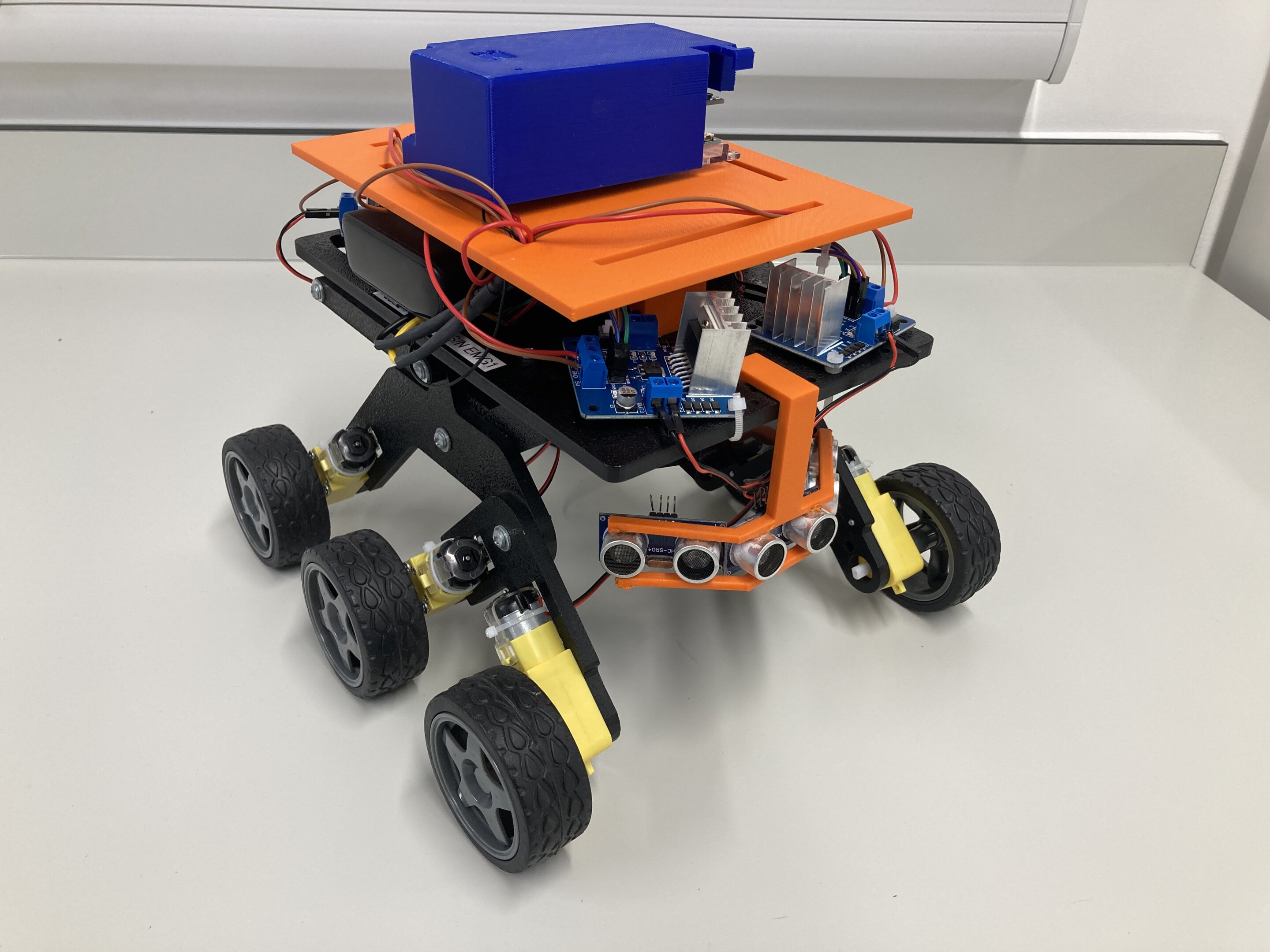Imagine a swarm of rovers autonomously navigating the Martian terrain, each tasked with a specific scientific objective and working together to maximize mission efficiency. This exciting vision for planetary exploration might become a reality thanks to a groundbreaking new method developed by researchers at the University of Glasgow.
 |
| The rocker bogie runt rover has been selected as it has a small form factor and utilises off the shelf components. Credit: Sarah Swinton. |
For decades, roboticists have focused on developing ever-more sophisticated systems. However, ensuring these robots can operate flawlessly in real-world environments, particularly complex ones like distant planets, remains a significant challenge. Communication delays between Earth and these remote locations make real-time human control impractical.
This is where the University of Glasgow's research comes in. Their newly proposed method, detailed in a pre-print on arXiv, paves the way for multi-robot teams to autonomously and reliably explore other planets. This approach integrates data from various sources, including high-resolution images, pre-existing maps, and sensor readings, to meticulously plan efficient exploration routes for each robot within the team.
"Utilizing a team of rovers for Martian exploration, rather than a single one, has the potential to significantly enhance the scientific output of such missions," explains Sarah Swinton, the lead author of the paper. Communication limitations between Earth and Mars necessitate a certain level of autonomy for planetary rovers. Human intervention for even basic maneuvers becomes extremely time-consuming due to these delays. Employing a multi-rover team further amplifies the need for autonomy, as coordinating their actions becomes significantly more complex for human operators.
Swinton and her team aimed to address a long-standing challenge in robotics: effectively coordinating multi-robot systems for autonomous planetary exploration missions. Their solution is a multi-rover mission planner that empowers teams of small, specialized exploration rovers to navigate Martian landscapes autonomously, safely, and efficiently.
"Our proposed method facilitates autonomous exploration by the rover team through two key stages: map generation and mission planning," Swinton elaborates. "The first stage involves constructing a detailed map of the target exploration area using data captured by the Mars Reconnaissance Orbiter. In our study, we specifically focused on Jezero Crater, the current operational site of NASA's Perseverance rover."
Once the environmental map is established, the planner meticulously analyzes it, segmenting it into distinct regions. This segmentation highlights areas with terrain suitable for safe rover traversal. Subsequently, the planner overlays a probability distribution map. This map indicates the likelihood of encountering scientifically significant locations within specific regions of the exploration zone.
"These points of interest could be rock formations that warrant sample collection by the rovers," clarifies Swinton. "Following the generation of this combined map, our mission planner meticulously searches the environment to identify the most efficient exploration route that maximizes the chances of encountering these points of interest. Ultimately, the planner determines a set of coordinated safe paths for each individual rover within the team."
The multi-rover mission planner developed by Swinton and her colleagues offers several distinct advantages over previous methods. Beyond delineating safe travel paths for autonomous rover operation, the planner additionally identifies potential locations of scientific interest. This significantly enhances the mission's scientific return by guiding the rovers towards areas with the highest potential for groundbreaking discoveries.



0 Comments